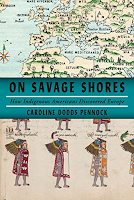If the inner truth of gender is a fabrication and if a true gender is fantasy instituted and inscribed on the surface of bodies, then it seems that genders can be neither true nor false, but are only produced as the truth effects of a discourse of primary and stable identity.A couple years ago, journalist Spencer Bokat-Lindell wrote a piece titled “Turducken is Performative” and received, to his surprise, a response from Judith Butler. First, they complimented his article, then very graciously cautioned him against associating “performative” with fake, clarifying that performance can emulate desired realities, and sometimes even bring them about. It’s funny, yes, that one of the most famous scholars in the world would fire off a note about a seemingly trivial misreading, but having read Gender Trouble, it makes sense: the entire work could be flippantly summarized by the famous Vonnegut quote, “We are what we pretend to be, so we must be careful what we pretend to be.”
Of course, it’s more complex than that. Much, much more complex. Gender Trouble is one of the most difficult texts I’ve ever completed, not due to Butler’s supposedly-impenetrable prose--I found it dense but generally quite lucid--but because it’s such a thorough investigation and dismantling of a number of theories of sex/gender, most notably Lacan and Freud but secondarily Levi-Strauss, Derrida, Foucault, Wittig, Irigaray, and structuralist theories of sex/gender as a whole. I won’t attempt to summarize their specific arguments, not that I could, except to say that they consistently tug at one particular thread: is there a pre-symbolic/pre-linguistic/ontological foundation to sex/gender, or are they entire constructed through performance of both socially acceptable and culturally heterogeneous acts?
The structuralists and their immediate predecessors--especially Lacan and Freud--say yes. As I understand it, the origin of both sexuality and language can be found in, uh, incest, the original and strongest taboo. Sexuality is a discursive effect of the repression of the Oedipal desire; because they cannot have sex with the parent, their sexual desires are projected outward toward other members of the opposite sex who can temper but not slake the original desire. Language, on the other hand, grows from the pre-verbal cries of desire, transforming, as the child gains distance from the parent, into other symbols and signifiers, and so on.
Even a cursory reading of the above makes clear the foundational binary at play; there are heterosexual men and women who have heterosexual desires, there are heterosexual men and women who have homosexual desires (caused by the much rarer Reverse Oedipus, really). Ultimately all these desires must either be subsumed in (ersatz?) heterosexual acts or suppressed entirely, because the only alternative is literally madness.
Yeah.
While this may look regressive, the binary is equally strong even in some radical feminist approaches to gender. Wittig, the mother of political lesbianism, makes great headway at dismantling the necessity of heterosexuality but only imagines a wholesale rejection of opposite-sex acts as a response, finally serving only to further establish rejection of heterosexuality as the basis of a new binary, and starting the cycle again. Even Foucault, the thinker Butler seems most in sync with, envisions sex/gender primarily as the abolishment of all sexual identity, resulting in some sort of post-gender paradise, perhaps a nice idea but not one that seems coherent with the way people are.
Butler, on the other hand, thinks bigger. Her ideas are perhaps not as shocking as they once were--though who can say, as we live through Gay Panic 2.0--but it’s still bracing, in 2023, to read about the radical deconstruction and reconstruction of sexual and gender identity in such stark (such as it is) language. A section about how sex is as socially constructed as gender, supported by Foucault’s ideas of gender as a construct of social control, was especially thought-provoking, as it posits that splitting humanity into a binary based on sexual anatomy is just as arbitrary (and no less non-binary) than divisions based on hair color, skeletal structure, or whether one has an innie or an outie--that is, unless the primary purpose of your society is to reproduce the family structure as a means of consolidating power. Then it makes perfect sense to keep the women pregnant in the kitchen while the men go out hunting and gathering and waging war.
A sense of “there is no there there” pervades the last section of the work, in which performativity is presented in its full (at the time) academic form. As I understand it (and as Butler helpfully summarized in her Turducken letter), performance can be oppressive, mandated one’s place in the cultural hierarchy. But they can also be liberative, joyful, constructive, as in a drag show where the absurdities and disjunctions of sex and gender identity are banged together until they break (I understand why drag shows scare conservatives so much now). But even performance is circumscribed by cultural laws and expectations, as Butler discusses below:
The subject is not determined by the rules because signification is not a founding act, but rather a regulated process of repetition that both concerns itself and endorses its rules precisely through the production of substantializing effects. In a sense, all signification takes place within the orbit of the compulsion to repeat; agency then is to be located within the possibility of a variation on that repetition. If the rules governing signification not only restrict but enable the assertion of alternative domains of cultural intelligibility, then it is only within the practices of repetitive signifying that a subversion of identity becomes possible.
The above was like a light at the end of the tunnel after two hundred pages of theories that presented sex and gender as either immutable, posited a post-patriarchal society that still used the binary as a load-bearing wall, or critiques that identified problems but seemingly offered no way forward. The answer, Butler seems to say, is to do what we can, to make small changes in the acts of repetition that, after all, form us and the society we live in, until finally we can look around and see that things have changed in meaningful, liberating ways.
On a personal level, a few years ago, I thought my kids would be growing up in a world where aggressive queerphobia was verboten; seeing it make a comeback has been dispiriting in a way I can't describe. In a time when conservatives at home and abroad are targeting sexual minorities, where trans high schoolers are being stabbed to death, where men kill trans women after sex, Gender Trouble is necessary, a dense, difficult work that still sounds like the future. May the future get here soon.




















